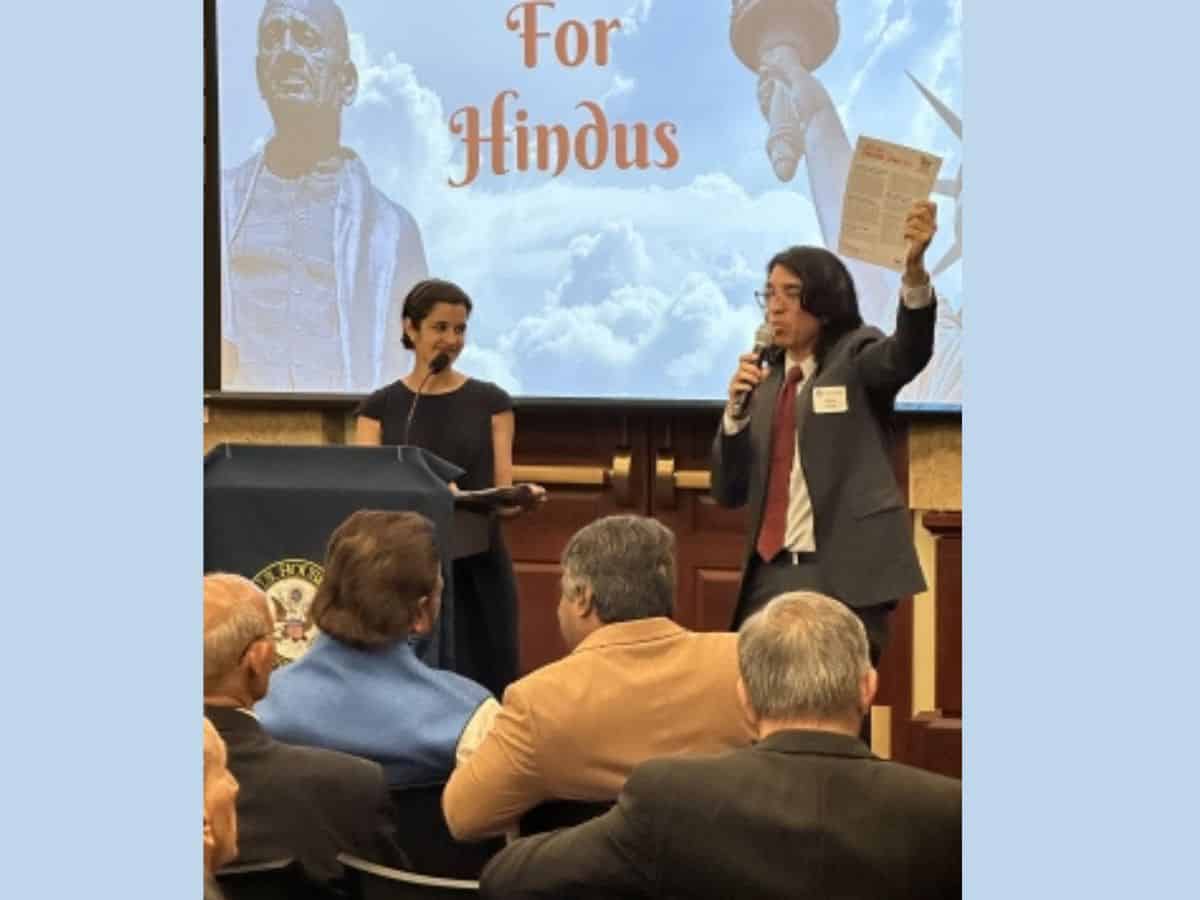
Washington: Lawmakers came and held forth. On Mahatma Gandhi. On the Taj Mahal. And Indian-Americans, their riches and their achievements. Anything but Hindu-Americans.
The problem: The lawmakers had been invited to an event hosted by a combination of Hindu-Americans — Americans for Hindus and the Hindu American Foundation — in Capitol Hill on Wednesday to support and bless a move to launch a religion-specific Hindu Caucus in the US congress, which, in the words of the hosts, would take care of the Hindus, protect their interests and, most urgently, combat Hinduphobia.
Four of the five Indian-Americans in the US congress, including the three Hindus Raja Krishnamoorthi, Ro Khanna and Pramila Jayapal. did not attend.
The fourth, Ami Bera, is not Hindu, he is Unitarian. Shri Thanedar, the fifth and newest member of the group that calls itself the “Samosa Caucus” attended and promised to shepherd the caucus.
But the other lawmakers? They did not know what they were doing.
“I love the thought of, as I am looking at Mahatma Gandhi and the Statue of Liberty,” said Joe Wilson, a Republican member of the House of Representatives, nodding at a large poster in front, and there was the same poster behind him and the speaker’s lectern.
“They deserve to be together.”
It was not Mahatma Gandhi on the poster. It was Sardar Vallabhbhai Patel; actually, an image of his statue in Gujarat that’s known as the Statue of Unity.
Wilson had crossed a line. And he did not know it.
The difference between the two men — Gandhi and Patel — go far deeper for subscribers of the muscular brand of Hinduism promoted by the RSS-BJP combine, which venerates Gandhi’s assassin.
“They really do not know or understand the difference between the two men,” said one of the organisers, adding “because they don’t know what Gandhi did”.
Sheila Jackson Lee, a Democratic member of the House of Representatives, hadn’t been briefed on the Gandhi-Patel dynamic either.
“I’m the kind of member who has been to India many times. I had the pleasure of walking through the house of Gandhi when I visited with the late John Lewis (a longtime member of the House of representatives and a civil rights leader who was close to the Martin Luther King),” she said, adding, unknowingly crossing another redline: “I’ve been everywhere, to the Taj Mahal more times than I can count.”
She was met with a deafening silence. Her attempts to connect with her Indian-American constituents, using the usual pitch points — the Taj Mahal that had always worked — failed.
Barely a minute before, the Congresswoman was greeted with a long and loud applause when she brought up Prime Minister Narendra Modi’s upcoming visit later this month and said that she was looking forward to his address to the joint session of Congress.
Modi will arrive in Washington D.C. on June 22 for a state visit, which includes a state dinner — which is only the second for an Indian Prime Minister in decades — and a joint address to the US congress.
Indians — and by extension Indian-Americans — were proud of the Taj Mahal once. And then it became a disputed territory in the revisionist history of India promoted by the RSS-BJP combine and their governments.
Despite missing the regular pitch points, Congresswoman Jackson Lee took a thinly veiled shot at the current political situation in India. “I think democracy is an issue that we can join together on because there is no doubt India is the largest, and we are the oldest and we’ve all had our challenges, have we not? We have all had our challenges,” she said.
For a Democrat like herself, the threat to democracy in the US comes from supporters of the former President Donald Trump, a Republican, who is facing investigations for trying to subvert the outcome of the 2020 presidential election.
The threat to democracy in India, on the other hand, is seen by Democrats to come from the party in power there.
Senator Mark Warner, a Democrat who heads the India Caucus in the upper chamber, on Tuesday called for Prime Minister Modi to show “commitment, or recommitment” to democracy.
His surprisingly blunt remarks came at an annual celebration of the bilateral relationship hosted by the US-Indian Business Council, a wing of the powerful US Chamber of Commerce.



